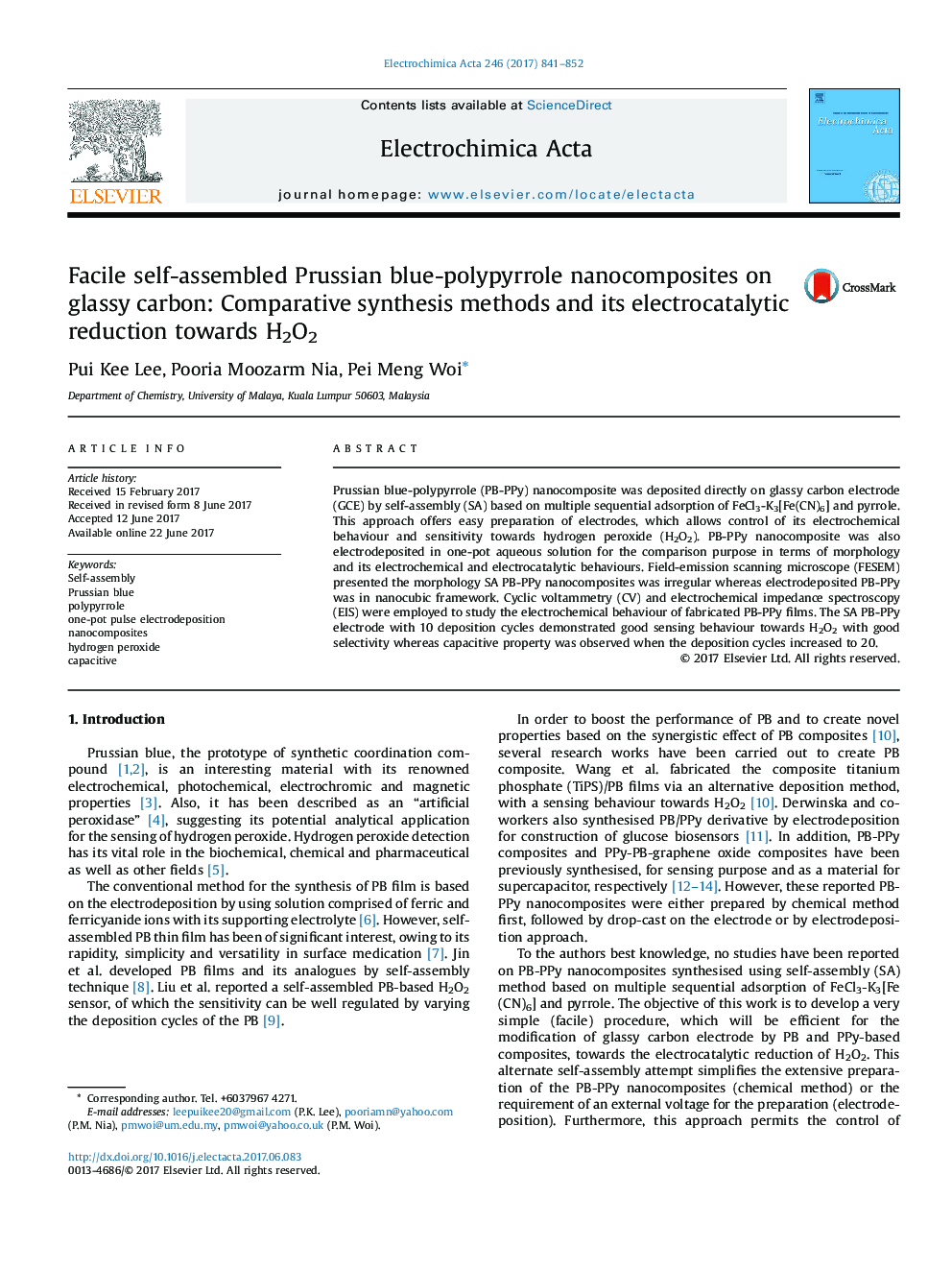| Article ID | Journal | Published Year | Pages | File Type |
|---|---|---|---|---|
| 6470627 | Electrochimica Acta | 2017 | 12 Pages |
â¢A facile self-assembly method to deposit Prussian blue-polypyrrole (PB-PPy) nanocomposite directly on the electrode.â¢At least 2 times lower charge transfer resistance (Rct) of self-assembled PB-PPy compared to electrodeposited PB-PPy.â¢Increasing number of cycle of self-assembly can tune the electrochemical behaviour of the modified electrode, from a sensing performance to a capacitive characteristic.
Prussian blue-polypyrrole (PB-PPy) nanocomposite was deposited directly on glassy carbon electrode (GCE) by self-assembly (SA) based on multiple sequential adsorption of FeCl3-K3[Fe(CN)6] and pyrrole. This approach offers easy preparation of electrodes, which allows control of its electrochemical behaviour and sensitivity towards hydrogen peroxide (H2O2). PB-PPy nanocomposite was also electrodeposited in one-pot aqueous solution for the comparison purpose in terms of morphology and its electrochemical and electrocatalytic behaviours. Field-emission scanning microscope (FESEM) presented the morphology SA PB-PPy nanocomposites was irregular whereas electrodeposited PB-PPy was in nanocubic framework. Cyclic voltammetry (CV) and electrochemical impedance spectroscopy (EIS) were employed to study the electrochemical behaviour of fabricated PB-PPy films. The SA PB-PPy electrode with 10 deposition cycles demonstrated good sensing behaviour towards H2O2 with good selectivity whereas capacitive property was observed when the deposition cycles increased to 20.
